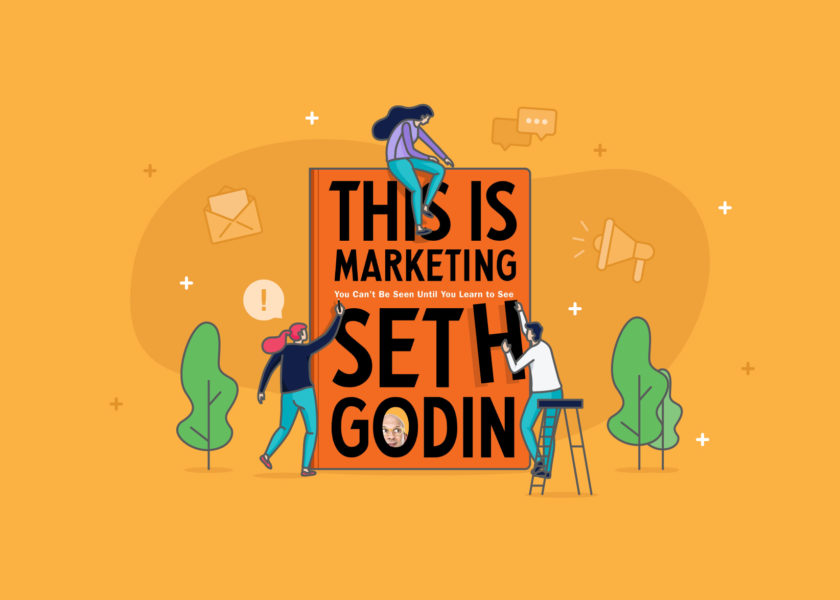Chances are your law firm has started investing in legal tech, including client-facing tech. Technology that enables clients, prospects and even referrers to get a solution to a problem without needing to engage a lawyer is often a win-win, and it’s never been a more exciting time to work in the marketing department of a law firm.
However, after talking to many of the members of the Australian Legal Technology Association’s recent event, ALTACON, something has become very evident when law firms start developing client-facing software. The technology is streets ahead of how it is marketed.
Here, we run through everything you need to know to catch up and start promoting your firm’s tech products more effectively.
Why legal tech requires a fresh marketing approach
As a former in-house legal marketing manager, I know that most legal marketing tactics focus on positioning your lawyers as thought leaders, often in a sector or other niche, and developing client and referrer relationships.
But marketing technology (or products) requires a completely different strategy. This is because there are four key factors that make services, especially professional services, different:
1. Intangible
They can’t physically be seen, held or tried out. As a result, you can’t return them and they are very difficult to evaluate until after they have been purchased. Hence the focus on word-of-mouth and positioning a lawyer or team as a thought leader.
2. Inconsistent
Every lawyer will deliver their service differently. They’re not robots and all have different ways of doing things based on their experience, personality and strengths and weaknesses.
3. Perishable
You can’t store time like you can store products on a retail store shelf. Your lawyers are all limited to 24 hours in a day. Once that time has lapsed, you can’t get it back.
4. Inseparable
You can’t separate the delivery of the service from its consumption. The client and the lawyer must work together to achieve the outcome. Any lawyer who has received little or no brief from a client can attest to this.
These four factors make legal marketing a real challenge for lawyers, marketers and business development professionals.
Products (and technology) have the opposite attributes:
- They can be seen, tested and even returned if they don’t meet the buyer’s expectations.
- They are consistent (and products and technology never get sick or exhausted!)
- They can be stored. If you don’t sell the product today, that’s ok. You can still sell it tomorrow.
- And finally, they don’t require a lawyer to be involved in the process, each and every time (and tech can be made available 24/7 without the need for human contact or engagement).
From a legal marketer’s perspective, it sounds like a dream! So marketers must use these attributes to their advantage and stop trying to promote their legal tech in the same way they promote their law firm’s legal services.
Let’s consider three key strategies to consider when marketing your law firm’s legal technology products.
Marketing strategy one: consider ‘intent’
When marketing a product, the first thing to do is consider if the potential user or buyer is actually searching for the solution that you offer.
Ask yourself:
“Is the potential user actually looking for a solution to this problem and are they likely to know that a solution such as mine exists?”
If the answer is no, there’s no intent. But don’t fret. This is the same for many new and novel ideas. It just means that you have a bit more work to do in creating awareness of your solution.
Some tactics include:
- Create awareness through online public relations and pay-per-click display advertising that is targeted to a very specific audience. For example, target industry blogs and use Google and social media display networks.
- Consider approaching influencers (people, or in some cases, organisations) that can vouch for your product and make recommendations to their networks.
- Build a remarketing campaign that targets users who have shown interest in your product but have yet to take action (for example, those who’ve spent 2+ minutes on your website and visited 3+ pages but didn’t complete your call to action)
If the answer is yes, on the other hand, there is some intent. You want your marketing team to consider marketing tactics where users can find the right solution to their problem.
In many instances, a legal tech solution that a law firm has built is an answer to a common problem, and the value is that it is built for a specific audience in mind (not that it’s a brand new idea).
For example, if your law firm has created an online platform that generates employment contracts for HR Managers who work in the retail industry, you can be confident that the audience knows there are online tools that can help them.
Examples of tactics to use here include:
- Build a separate website or page on your website that includes information about the product.
- Invest in search engine optimisation including building content that answers common questions and obtaining links to your website from other, reputable and like-minded sites.
- Consider investing in Google search advertising, targeting keywords that show clear intent that the user is conducting research into options or is ready to take action.
Marketing strategy two: remove barriers to engagement
According to countless research articles, the biggest shift in buyer behaviour since the introduction of the internet is that prospects will conduct their own research online now, before making contact with the seller.
Pre-internet, people had to make contact with the seller, early in the process, to learn about it.
To use an analogy, a person looking to buy a car before the internet would have to make contact with the car dealership to get information about the cars on offer. Now, that same person can do all their research online, delaying contact with the dealership until they’ve shortlisted their preferences.
The same applies to how you sell traditional legal services. A firm can provide users with valuable content that influences their decision making. It can communicate experience and expertise in a specific niche, by offering case studies, testimonials, or the like.
But given it is still a service, there is only so much a firm can do before it makes sense for the buyer to make contact with a lawyer at the firm.
This should not be the case with legal tech.
In most instances, just about everything can be made available to the user – and should be.
Tactics to make legal tech accessible will vary based on your application, but here are some examples of ways law firms can remove the barriers to engagement:
- Offer on-demand, free trials of your product. If you don’t need the user to talk to a business development person, you will naturally get a much better conversion rate of people taking action on your website.
- If you can’t offer on-demand trials, create a short explainer video that explains the features and benefits of the technology. This will help people assess it before making contact with your firm. At the end of the video, we strongly recommend offering an online appointment booking tool such as LawSwitch to make it easier for prospects to engage with you and arrange a consultation.
- Build a knowledge base (or FAQ) that answers common questions about the product. Most people prefer to be self-sufficient, especially when they are working outside of business hours. It will also help you eliminate service requests and prospective buyers will like seeing that support is available, on-demand.
- Consider offering live chat during business hours and, at the very least, a service that allows you to capture email addresses when you are offline.
- If you can, include your pricing. This way you will only need to engage with people who know what your service costs.
Marketing strategy three: invest in social proof and trust signals
Word-of-mouth marketing is (by a long way) the largest source of new work in commercial law firms, and most family, personal injury and criminal firms.
When a person needs to engage a lawyer, the stakes are often high and the high-cost/high-value nature of the advice means that people often seek the opinion of a trusted contact.
Many legal tech offerings by law firms are still predominantly being used by existing clients and referrers, especially in commercial practices. But when you need to broaden that reach, your social proof should be available for all to see.
One of the great advantages of legal tech has over delivering traditional services is that it can be on-demand and accessible on the users’ terms. Therefore, it’s important that social proof and marketing communications aren’t only available on request.
Products don’t need to rely so heavily on offline word-of-mouth.
Start by reviewing your website. Your website should include:
- examples of outcomes that the technology has helped people or businesses with
- a showcase of brands that have used or use the technology that your firm has produced (where appropriate)
- references and links to digital media reporting on your firm’s success with the product.
It’s important that social proof is front and centre rather than hidden away or only available to those who ask for it.
If you’ve built a standalone business or microsite, it’s a great idea to seek online reviews from happy users. Develop an automated email marketing campaign that asks users for a review on Google a set time after they have used the tool. If it’s appropriate and the technology is available, seek reviews on websites like Capterra and G2 Crowd.
Trust signals include social proof but are also related to things that people would expect to see from a reputable business. Therefore, in this context, it’s important to clearly communicate:
- Your legal tech’s security and encryption settings. If you are using an external software company, ask them for that information and communicate this on your website.
- How information will be used that is transmitted through the website or application. Is it confidential? Is it even accessible by people within the firm?
- Your website’s terms and conditions, privacy policy and how your website is recording information (tracking pixels, cookies, etc).
- How people can get in contact with your firm. It’s important to include your firm’s name, contact phone number and email address.
Don’t delay, act today
The advent of legal technology to help people access legal services around the clock and without human interaction is exciting, to say the least. Whether your firm is making use of an existing software platform or has produced its own custom application, you’ll know that client-facing legal tech isn’t going anywhere.
The technology exists and is only becoming more and more sophisticated and powerful. From what I have seen at ALTACON, the Australian market is well-placed to be very influential in the global legal tech industry.
This means that Australian law firms have fantastic technology at their fingertips. The challenge for marketers is to help their firms find an audience for it.





